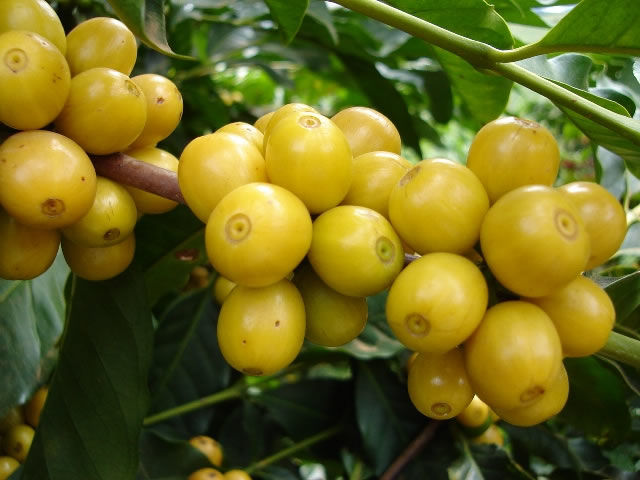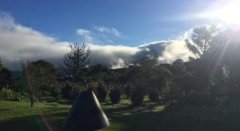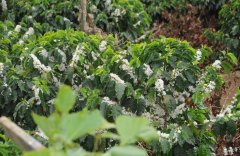Parameters of Central American Salvadoran Coffee characteristics of Salvadoran Coffee producing areas
For professional baristas, please follow the coffee workshop (Wechat official account cafe_style)
The land bridge between Central America and North and South America consists of seven countries, namely Belize, Costa Rica, El Salvador, Guatemala, Honduras, Nicaragua and Panama. Seven Central American countries all produce coffee, of which Guatemala, Costa Rica and Honduras are among the top 10 global coffee exporters.
Coffee began to flourish in Central America in the 18th century, and this important economic product originated in Costa Rica around 1840. Since Central America became independent from Spain in 1821, there has been a lot of war. Costa Rica was far from the Spanish colonial capital Guatemala. On the contrary, Guatemala and El Salvador delayed coffee production because of the civil war. After that, the political dispute gradually subsided, and the Central American countries except Honduras began to produce coffee in the 19th century.
Central America has the natural advantages of sunshine, land, and mountains, and a sufficient working population, which makes the region unique in growing and producing high-quality coffee. In the late 19th century, coffee became an indicator of economic growth in Central American countries and passed the Coffee Promotion Act in an all-round way. With the most remarkable results in countries such as Costa Rica, El Salvador and Guatemala, coupled with the scientific and technological way of growing coffee, Central America has become one of the four largest coffee producing areas in the world.
El Salvador
Active volcanic activity brings mineral-rich volcanic ash, and the soil mainly composed of volcanic ash has more minerals and less organic matter. in order to maintain the location and make up for the lack of organic matter, farmers use treated coffee bean pulp residue, or organic matter under coffee trees as fertilizer to make up for the lack of organic matter in the soil, growing more than 150000 tons of organic coffee every year.
Sa coffee has five major producing areas (Apaneca, Central Belt, Chichontepec, Tecapa & Cacahuatique Mountain Range) distributed in the volcanic ash-covered mountain slopes or plateau areas at an altitude of 1200 meters. The coffee harvest season is from November to April of the following year. Coffee likes mild climate, so coffee trees are mostly planted in the shade of tall trees to avoid high temperature and direct exposure to the sun, affecting the quality of coffee beans. The coffee beans produced belong to Arabica species, and Pacas and Bourbon belong to big beans, which have sweet taste and excellent flavor.
Planting altitude above 1200 meters above sea level: joyful fragrance, delicious comfort, sour taste, excellent texture, must be at least 90% bourbon, Pacamara, 100% sun exposure

Important Notice :
前街咖啡 FrontStreet Coffee has moved to new addredd:
FrontStreet Coffee Address: 315,Donghua East Road,GuangZhou
Tel:020 38364473
- Prev

A detailed introduction of the coffee production areas of Costa Rica on behalf of coffee from Central America.
For the exchange of professional baristas, please follow the Coffee Workshop (official Wechat account cafe_style). There are seven countries in Central America, namely, Belize, Costa Rica, El Salvador, Guatemala, Honduras, Nicaragua and Panama. All seven countries in Central America produce coffee, among which Guatemala, Costa Rica and Honduras are global coffee exporters.
- Next

Characteristics of Guatemalan coffee beans in different producing areas Coffee bean flavor in each producing area of Guatemala
For the exchange of professional baristas, please follow the Coffee Workshop (official Wechat account cafe_style). There are seven countries in Central America, namely, Belize, Costa Rica, El Salvador, Guatemala, Honduras, Nicaragua and Panama. All seven countries in Central America produce coffee, among which Guatemala, Costa Rica and Honduras are global coffee exporters.
Related
- Detailed explanation of Jadeite planting Land in Panamanian Jadeite Manor introduction to the grading system of Jadeite competitive bidding, Red bid, Green bid and Rose Summer
- Story of Coffee planting in Brenka region of Costa Rica Stonehenge Manor anaerobic heavy honey treatment of flavor mouth
- What's on the barrel of Blue Mountain Coffee beans?
- Can American coffee also pull flowers? How to use hot American style to pull out a good-looking pattern?
- Can you make a cold extract with coffee beans? What is the right proportion for cold-extracted coffee formula?
- Indonesian PWN Gold Mandrine Coffee Origin Features Flavor How to Chong? Mandolin coffee is American.
- A brief introduction to the flavor characteristics of Brazilian yellow bourbon coffee beans
- What is the effect of different water quality on the flavor of cold-extracted coffee? What kind of water is best for brewing coffee?
- Why do you think of Rose Summer whenever you mention Panamanian coffee?
- Introduction to the characteristics of authentic blue mountain coffee bean producing areas? What is the CIB Coffee Authority in Jamaica?

